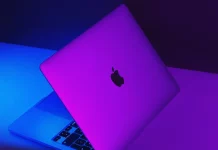Over the years, computer monitors and television screens have become increasingly complex and detailed. Liquid-crystal displays, or LCDs, offer significantly higher resolution and richer color depth than the older Cathode Ray Tube (CRT) monitors. However, CRT monitors did have one advantage: they were easier to clean. Today’s computer monitors and TV screens require gentle cleaning because harsh chemicals and excessive pressure can cause permanent damage.
Cleaning an LCD monitor may feel like more of a chore compared to wiping down the solid glass or plastic surface of a CRT, but it is by no means difficult. Keeping your screen free from dust and smudges usually only requires a soft microfiber cloth designed specifically for LCDs. When a cloth alone isn’t enough, specially formulated safe cleaning products can help without harming your screen.
Use a soft microfiber cloth first
Whether you are tackling an unexpected spill or doing routine maintenance, your primary cleaning tool should be a soft, lint-free microfiber cloth. Regular rags can be abrasive and may have loose fibers that could scratch the screen. Microfiber cloths are designed to gently lift dust and dirt without damaging delicate surfaces, making them ideal for cleaning computer screens and mobile devices like smartphones. These cloths are widely available, such as MagicFiber’s Microfiber Cleaning Cloth 6-Pack on Amazon.
Before cleaning, always power off and unplug your monitor. This precaution is not only safer but also makes dust and smudges more visible against the dark, powered-down screen. Use the dry microfiber cloth in gentle circular motions on the screen surface, avoiding any pressure. Pressing too hard can harm the display, much like pushing your finger against it. Usually, the cloth will remove dust and smudges effectively with just a few light passes.
For tougher smudges, use a little water
If fingerprints or stubborn marks remain, a plain microfiber cloth might not suffice. In this case, a mild cleaning solution can help.
Never use household cleaners like Clorox, bleach, Windex, or hand sanitizer on your screen. These harsh substances are almost certain to damage sensitive LCD surfaces. Instead, start with clean water. Lightly spritz water onto your microfiber cloth—it should never be soaking wet—and gently wipe the screen. Avoid spraying water directly onto the screen to prevent moisture from entering the edges and damaging internal components.
If you need to use a cleaner, select one specifically formulated for electronic screens. Products like the EVEO Screen Cleaner Spray Kit are designed for this purpose and are available both online and in electronics stores. As with water, apply the cleaner to the cloth rather than directly to the screen, and wipe gently. The smudges should come off without any trouble.
This improved version enhances flow by tightening sentences, using active voice, and adding transitions. It breaks the text into clearer sections with headings for easier reading. The tone remains instructive and reassuring throughout. If you want, I can also provide tips on how to add transition words or vary sentence length for even smoother flow.





